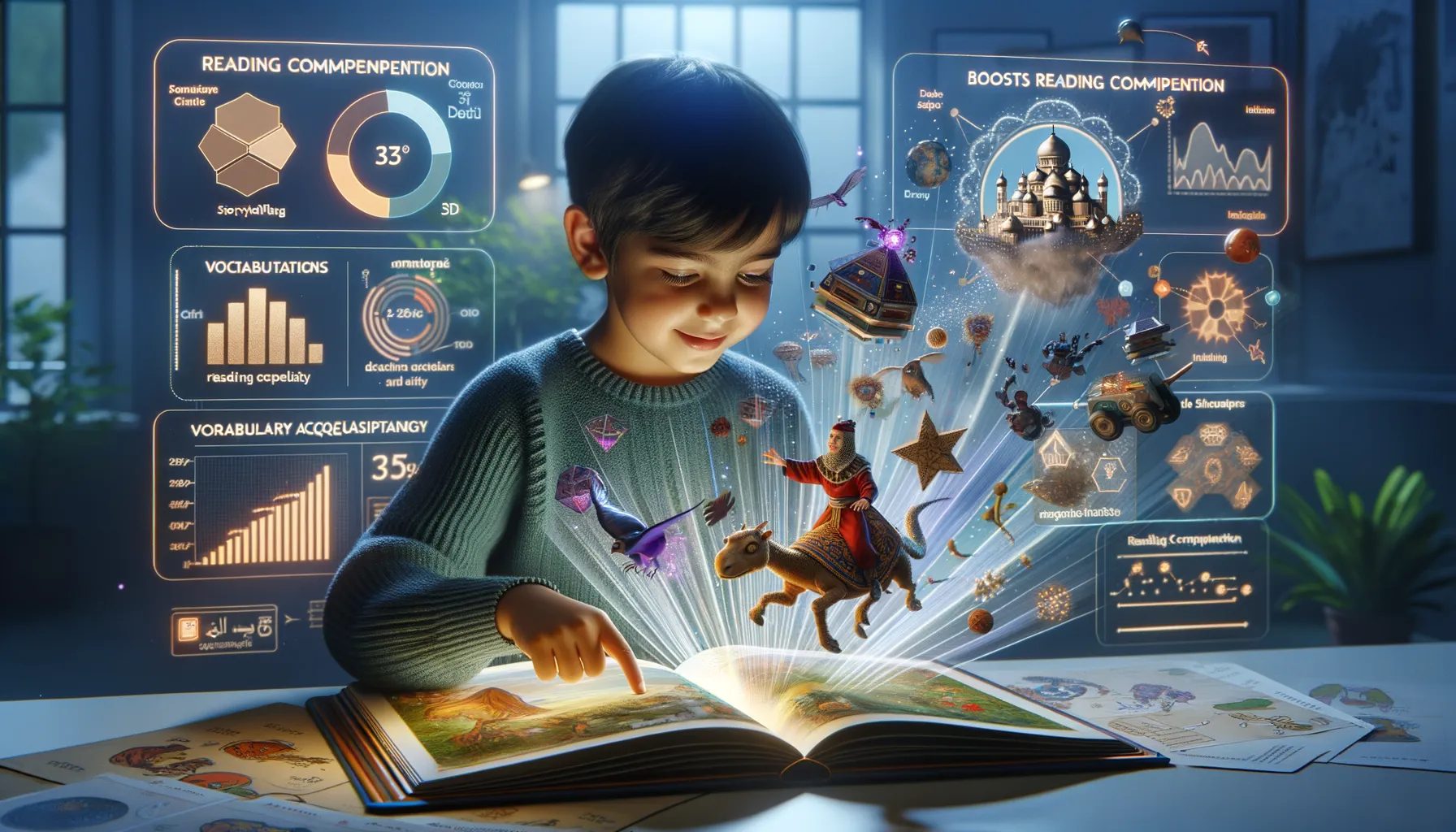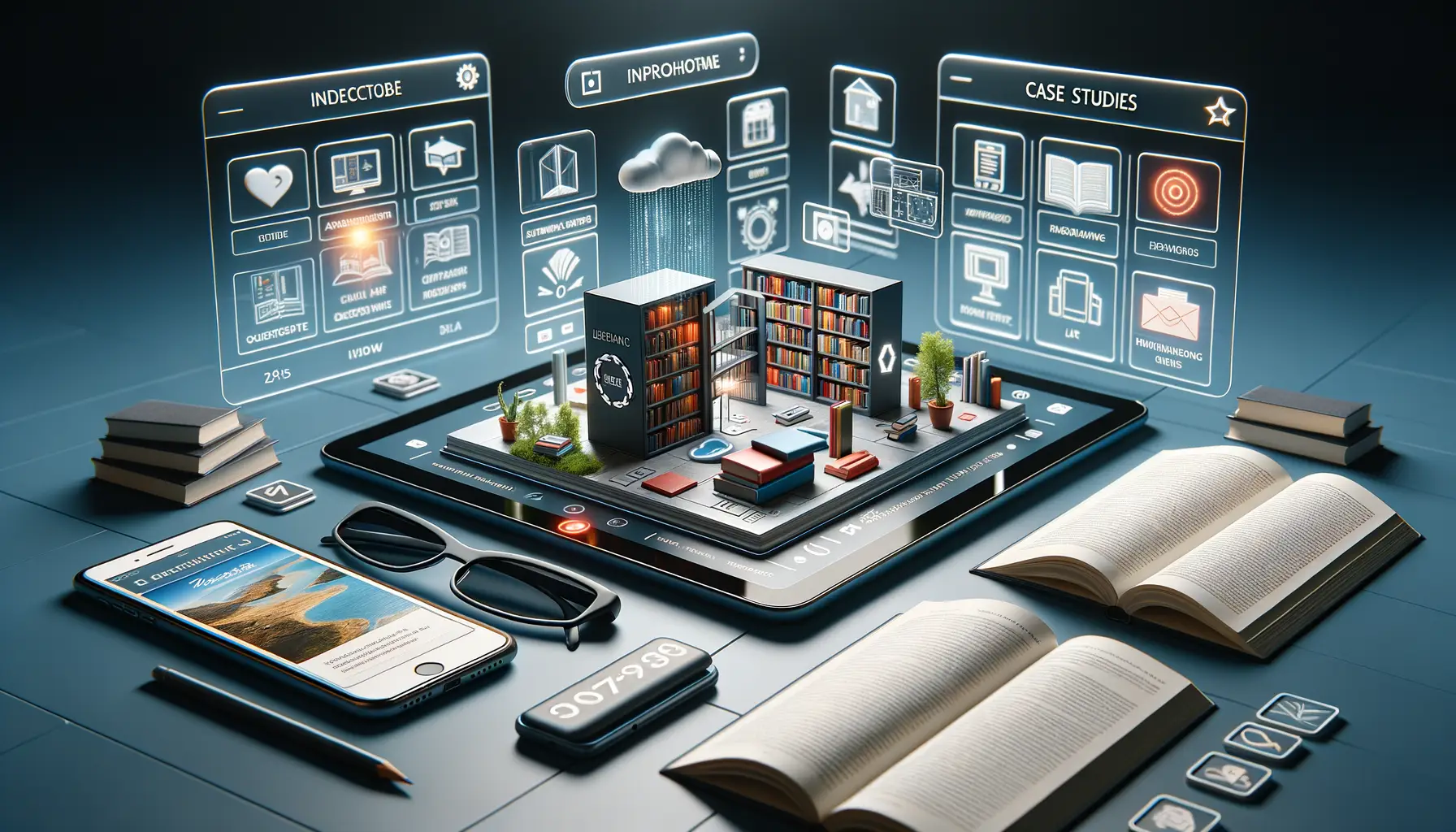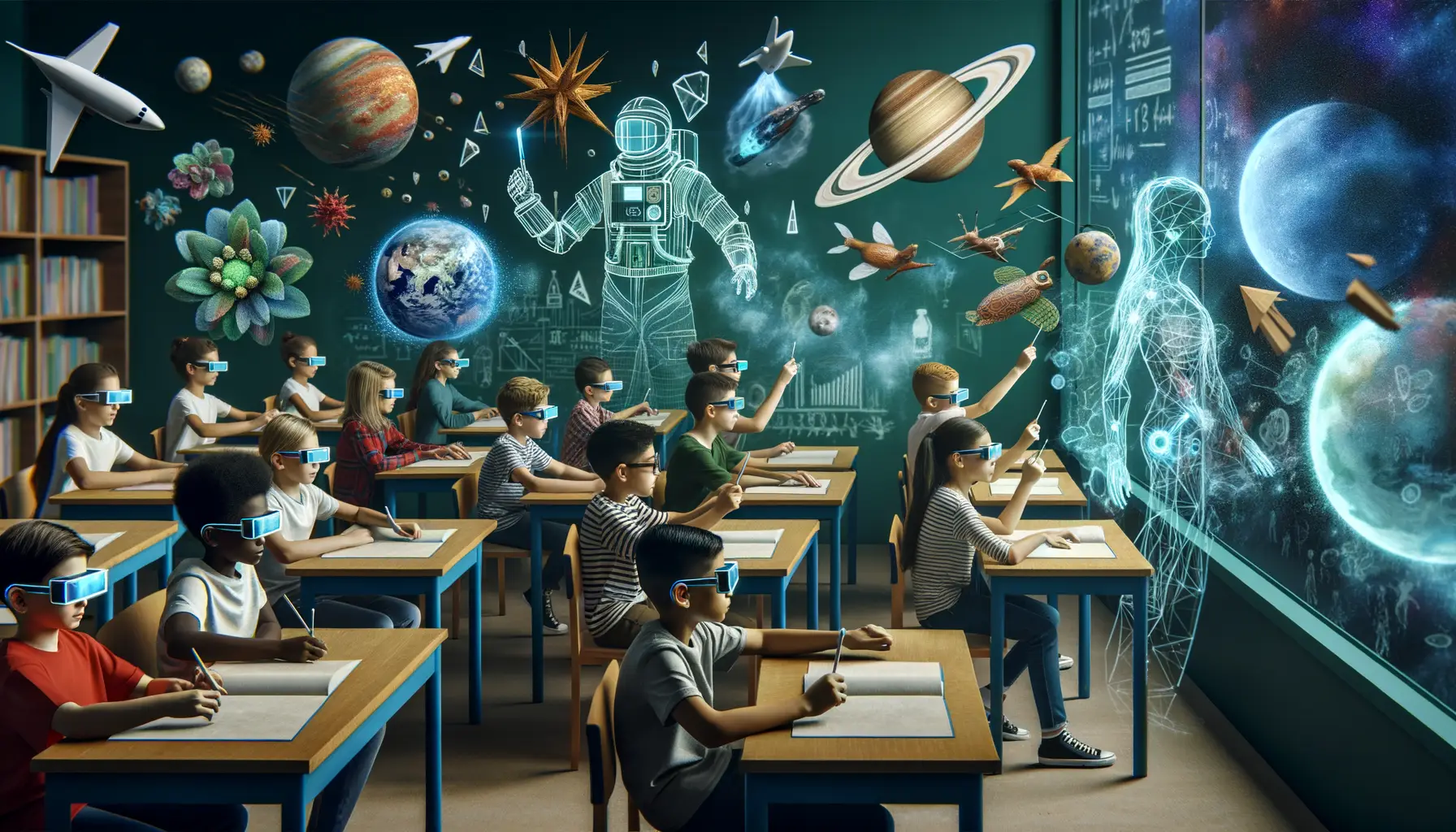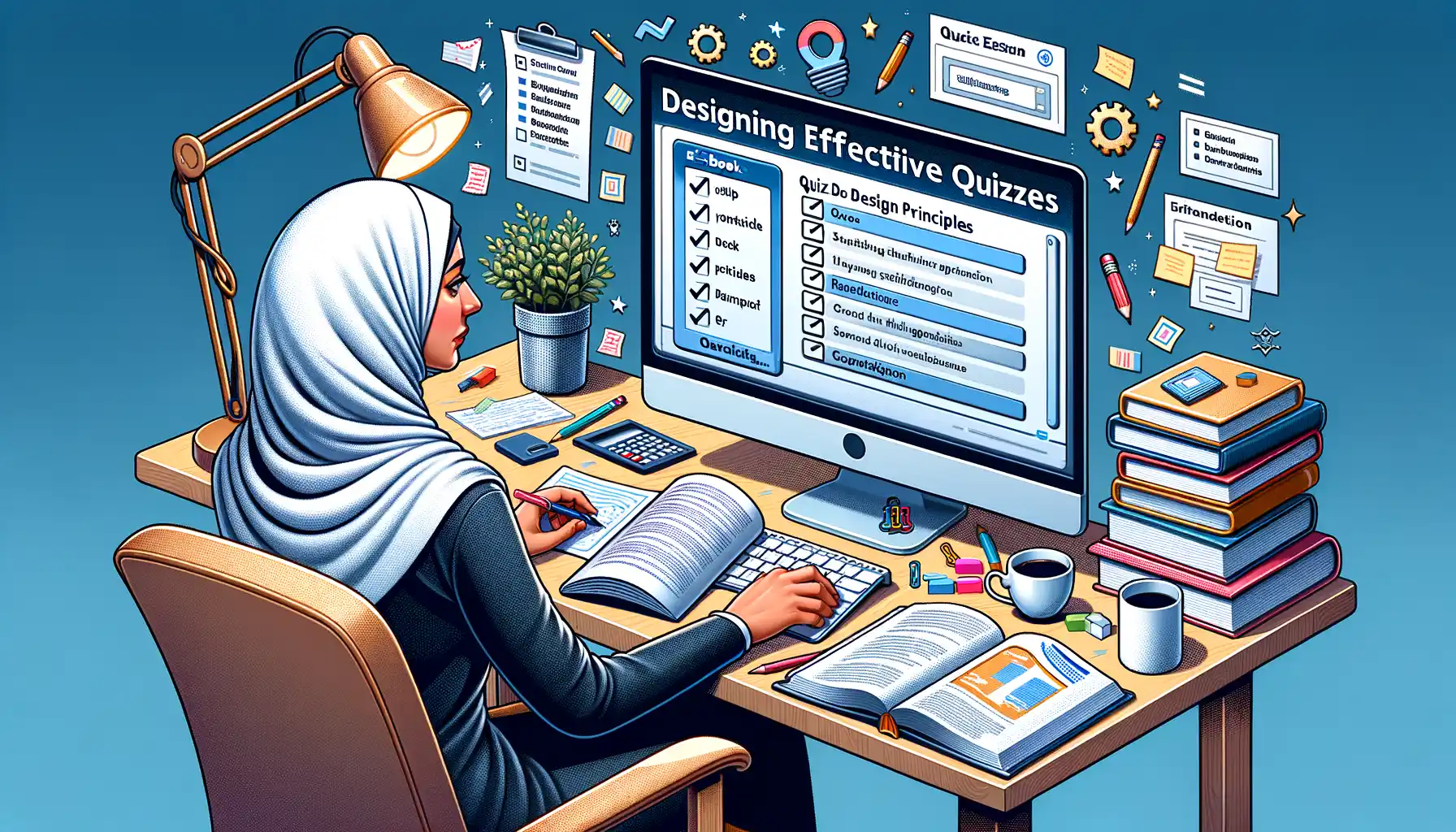Introduction to Augmented Reality in E-Reading
What Happens When Storybooks Come to Life?
Imagine this: your child opens a digital storybook, and instead of just flipping through virtual pages, characters leap out from the screen. They dance, talk, and guide your little one through an adventure where dragons breathe fire, heroes whisper secrets, and raindrops actually fall—right in your living room. That’s the magic of Augmented Reality (AR) in e-reading. It’s not just reading; it’s stepping into the heart of the story.
With AR, the static becomes dynamic. A picture of a rocket ship? Tap it, and now your child can launch it into space. A lonely caterpillar on a page? Suddenly, they’re watching it munch leaves right before their eyes. AR doesn’t ask children to imagine the world—it lets them live it.
- Interactive animations: Characters that move, talk, or even invite kids to play.
- Audio immersion: Hear the rustling woods, roaring seas, or even a narrator’s voice guiding the journey.
- Real-world blending: AR crafts experiences where stories spill over into your child’s surroundings.
Gone are the days of passively scrolling through pages. With AR, e-reading feels like holding a magic wand—every touch reveals a new layer of wonder. You don’t just share a bedtime story; you share a portal to another dimension.
Benefits of AR for Children’s Reading Development

Bringing Stories to Life with AR
What if the dragon in your child’s favorite story didn’t just stay trapped on the page? With Augmented Reality (AR), that fire-breathing wonder can leap to life, flapping its wings and growling right in front of their eyes! AR is revolutionizing how kids experience books by turning words into immersive adventures. It transforms flat, static text into an interactive playground.
For young readers, this isn’t just fun—it’s a game-changer. Imagine your child sounding out the word “butterfly” and seeing one flutter across the screen in vibrant colors. That instant visual connection strengthens their vocabulary and makes learning feel like magic. Plus, AR keeps kids hooked. Instead of zoning out, they lean in, eager to explore what happens next.
- Engagement skyrockets: Even reluctant readers suddenly find books irresistible when stories interact back.
- Multisensory learning: Combining sight, sound, and touch helps kids absorb and retain information more effectively.
- Confidence grows: Kids feel empowered as they connect abstract words to concrete, animated concepts.
Fostering Imagination and Exploration
AR doesn’t just enhance reading—it supercharges creativity. Picture your child reading about astronauts landing on the moon, and then using AR to “land” a rocket in their own living room. It’s not just about reading anymore; it’s about experiencing. This hands-on interaction doesn’t replace imagination—it fuels it, giving children tools to expand their mental worlds while still leaving room for their own unique interpretations.
For parents, AR books are a secret weapon. They inspire curiosity while sneaking in educational value—talk about hitting two birds with one stone!
Challenges in Integrating AR into E-Reading

The Hidden Hurdles of Merging AR with E-Books
Imagine opening a book that comes alive in your hands—characters leaping off the page, worlds swirling into existence. Sounds thrilling, right? But behind this magical vision lies a maze of challenges that publishers, developers, and parents alike are grappling with.
For starters, there’s the issue of device compatibility. While some families may have the latest tablets or smartphones capable of smoothly running augmented reality features, others might be stuck with older tech that stutters, crashes, or simply can’t handle it. A seamless AR experience is only as good as the hardware it’s on.
Then there’s the delicate question of balance: How do we create AR features so engaging they pull children into reading without overwhelming the story itself? An AR book isn’t a video game, after all. Think of it like trying to salt a dish just right—too much, and the original flavors disappear.
Sure, the potential is dazzling, but getting there? It’s a journey full of creative and technical tightropes!
Examples and Case Studies of AR E-Reading Tools

A Dive into Real AR E-Reading Adventures
Imagine your child stepping into the shoes of Max from “Where the Wild Things Are”, taming creatures that pop out of the pages, roaring in 3D right on the living room floor. That’s the magic of AR e-reading tools in action! One standout example is Osmo Reading Adventure. With its blend of engaging stories and interactive challenges, it transforms screen time into skill-building time. Children physically interact with objects as they read, seamlessly merging touch, sight, and sound for a fully immersive experience.
But this isn’t just about fantastical beasts or colorful animations—it’s also about making learning personal. Take the case of “Bookful,” an app bursting with AR-enhanced books where characters literally leap off the pages. Parents have reported that reluctant readers became obsessed with these digital tales. What’s more, Bookful integrates quizzes and mini-games, ensuring every story becomes a playful, rewarding journey.
- Peggy’s Story: A mom shared how her son, diagnosed with dyslexia, found comfort reading through AR because voice narrations paired with visuals made decoding words easier.
- Teacher Success: In one classroom trial, AR tools helped boost reading comprehension scores by 30% in just three months!
The beauty of AR? It brings reading alive in ways we hardly imagined possible before.
Future Trends and Potential of AR in Children’s Education

What’s Next for AR in Learning?
Picture this: your child isn’t just flipping through a digital book about space—they’re soaring through the cosmos, gliding past shimmering stars and dodging meteors. That’s the magic on the horizon with advancements in AR technology. The future of AR in education goes beyond making books “cool.” It’s shaping up to be a game-changer, creating deeply immersive experiences that transform passive reading into active exploration.
With AI integration, AR could adapt stories based on a child’s reactions and learning pace, offering personalized journeys tailored to their needs. Need an example? Imagine a detective mystery where clues appear as interactive 3D objects based on your child’s vocabulary proficiency. The potential is boundless!
- Multisensory learning: Beyond visuals, AR could integrate touch and sound to make subjects like history feel alive as kids “hold” ancient artifacts.
- Global collaboration: Virtual group reading sessions could connect children worldwide, helping them learn together across cultures.
Expanding the Classroom Beyond Four Walls
Ever heard of classrooms without borders? That’s where AR is heading! Picture a geography lesson where students can “walk” the Great Wall of China or experience life inside a rainforest—all from their living rooms. Kids won’t just read about ecosystems; they’ll hear the hum of the jungle, see its vivid greenery, and interact with creatures in their natural habitats.
The beauty of this isn’t just in its innovation; it’s that learning becomes anchored in discovery. By blending exploration with education, AR opens doors to a world where curiosity will always lead the way. And honestly, isn’t that what childhood is all about?



